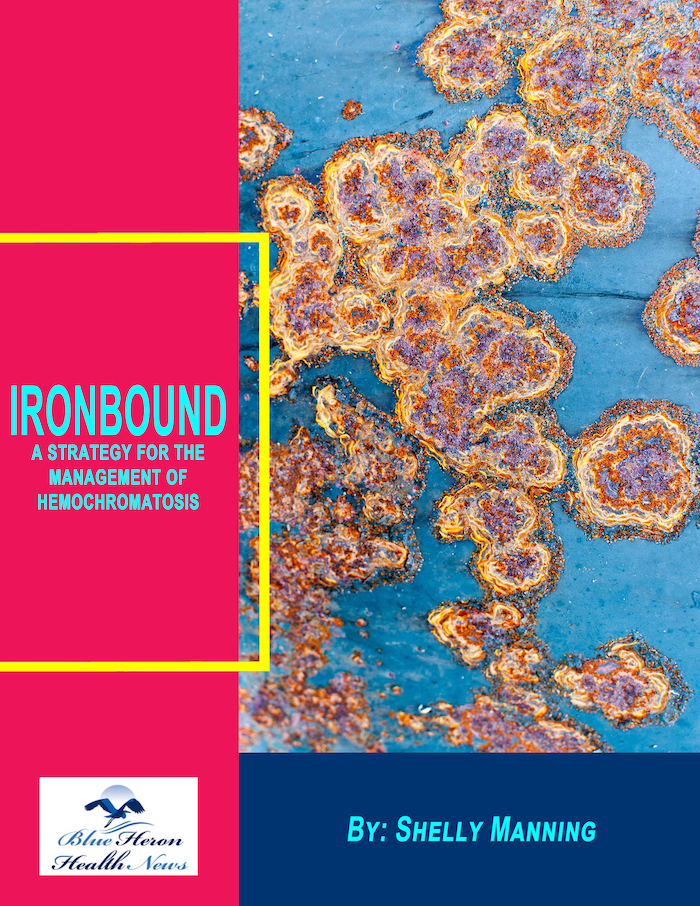
Ironbound™ A Strategy For The Management Of Hemochromatosis By Shelly Manning The 5 superfoods explained by Shelly Manning in this eBook play an important role in reducing the levels of HCT. The absorption of the excessive amount of iron by the genes of HCT can be blocked by these superfoods. In this way, the information provided in this eBook can help in resolving the problem of excess iron in your body naturally without any risk of side effects.
How is iron absorbed and stored in the body?
Iron Absorption and Storage in the Body
Iron is an essential nutrient that plays a crucial role in various bodily functions, including oxygen transport, DNA synthesis, and electron transport. The body carefully regulates iron absorption and storage to maintain iron homeostasis and prevent both iron deficiency and overload. Here is a detailed look at how iron is absorbed, transported, and stored in the body.
Iron Absorption
Iron absorption occurs primarily in the duodenum and upper jejunum of the small intestine. The process involves several steps and is influenced by the type of iron (heme or non-heme), dietary factors, and the body’s iron status.
Types of Iron
1. Heme Iron
- Source: Found in animal products such as meat, poultry, and fish.
- Absorption: Heme iron is more readily absorbed by the body compared to non-heme iron. It is absorbed intact by enterocytes (intestinal cells) via specific receptors.
2. Non-Heme Iron
- Source: Found in plant-based foods such as legumes, grains, vegetables, and fortified foods.
- Absorption: Non-heme iron is less efficiently absorbed and is influenced by various dietary factors. It requires conversion to the ferrous (Fe2+) form before absorption.
Steps of Iron Absorption
1. Conversion and Transport
- Dietary Conversion: Non-heme iron (ferric, Fe3+) is reduced to the ferrous (Fe2+) form by the enzyme duodenal cytochrome b (Dcytb) on the surface of enterocytes.
- Transport: Ferrous iron (Fe2+) is transported into enterocytes via the divalent metal transporter 1 (DMT1).
2. Intracellular Processing
- Storage and Utilization: Once inside the enterocyte, iron can be stored as ferritin or used for cellular processes.
- Export: Iron not immediately used or stored is exported into the bloodstream by ferroportin, the only known iron exporter.
3. Oxidation and Binding
- Oxidation: Upon export, ferrous iron (Fe2+) is oxidized back to ferric iron (Fe3+) by the enzyme hephaestin or ceruloplasmin.
- Binding: Ferric iron (Fe3+) binds to transferrin, a plasma protein that transports iron through the bloodstream.
Regulation of Iron Absorption
Iron absorption is tightly regulated to maintain homeostasis. The hormone hepcidin, produced by the liver, plays a central role in this process.
Hepcidin
- Function: Hepcidin regulates iron absorption by binding to ferroportin and causing its degradation, which reduces iron export from enterocytes into the bloodstream.
- Regulation: Hepcidin production is influenced by body iron levels, inflammation, erythropoiesis (red blood cell production), and hypoxia (low oxygen levels).
Iron Transport
Iron is transported in the bloodstream bound to transferrin, which delivers iron to various tissues and cells.
Transferrin
- Binding: Transferrin binds ferric iron (Fe3+) with high affinity.
- Transport: Each transferrin molecule can carry two iron atoms. Transferrin receptors (TfR1) on cell surfaces bind to transferrin, allowing iron to be taken up by cells via receptor-mediated endocytosis.
Iron Storage
Iron is stored primarily in the liver, spleen, and bone marrow. The two main storage proteins are ferritin and hemosiderin.
1. Ferritin
- Structure: Ferritin is a globular protein complex capable of storing up to 4500 iron atoms in its core.
- Function: Ferritin stores iron in a soluble and non-toxic form, releasing it when needed. It is present in almost all cells, with high concentrations in the liver and spleen.
2. Hemosiderin
- Structure: Hemosiderin is an aggregate of partially degraded ferritin and other materials.
- Function: It stores iron in a more insoluble form than ferritin and is typically found in macrophages, especially when there is excess iron.
Cellular Iron Homeostasis
Cells regulate iron uptake and storage to ensure a balance between availability and toxicity.
Iron Uptake
- Transferrin Receptor (TfR1): Cells express TfR1 to uptake transferrin-bound iron. The receptor-bound transferrin is internalized via endocytosis, and iron is released from transferrin within endosomes by acidification.
Iron Storage
- Ferritin: Cells store excess iron in ferritin to prevent free iron from catalyzing the formation of harmful free radicals.
Iron Utilization
- Mitochondria: Iron is essential for the synthesis of heme (a component of hemoglobin) and iron-sulfur clusters in mitochondria, which are critical for electron transport and energy production.
Systemic Regulation of Iron
Systemic regulation ensures that iron levels in the body are maintained within a narrow range to prevent deficiency or overload.
Hepcidin Regulation
- Iron Levels: High body iron levels increase hepcidin production, reducing iron absorption. Low iron levels decrease hepcidin, enhancing absorption.
- Inflammation: Inflammatory cytokines, such as interleukin-6 (IL-6), increase hepcidin production, reducing iron availability to limit bacterial growth (as bacteria require iron).
- Erythropoiesis: Increased red blood cell production suppresses hepcidin to allow more iron absorption and mobilization from stores.
Iron Loss
- Excretion: The body has no active mechanism to excrete excess iron. Iron is lost through shedding of intestinal cells, skin cells, and blood loss (e.g., menstruation, injury).
Disorders of Iron Metabolism
Iron Deficiency Anemia
- Cause: Insufficient iron intake, absorption issues, chronic blood loss.
- Symptoms: Fatigue, pallor, shortness of breath, impaired cognitive function.
Iron Overload (Hemochromatosis)
- Cause: Genetic mutations (e.g., HFE gene mutations), repeated blood transfusions.
- Symptoms: Fatigue, joint pain, liver disease, diabetes, skin discoloration.
Conclusion
Iron absorption, transport, and storage are finely regulated processes essential for maintaining iron homeostasis. The body absorbs iron primarily in the duodenum, regulates absorption through hepcidin, transports iron via transferrin, and stores it in ferritin and hemosiderin. Disruptions in these processes can lead to iron deficiency or overload, each with significant health implications. Understanding these mechanisms is crucial for managing conditions related to iron metabolism.
Ironbound™ A Strategy For The Management Of Hemochromatosis By Shelly Manning The 5 superfoods explained by Shelly Manning in this eBook play an important role in reducing the levels of HCT. The absorption of the excessive amount of iron by the genes of HCT can be blocked by these superfoods. In this way, the information provided in this eBook can help in resolving the problem of excess iron in your body naturally without any risk of side effects.
